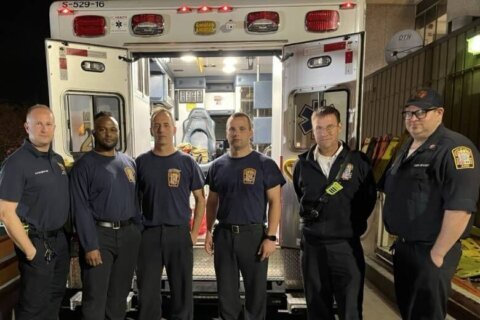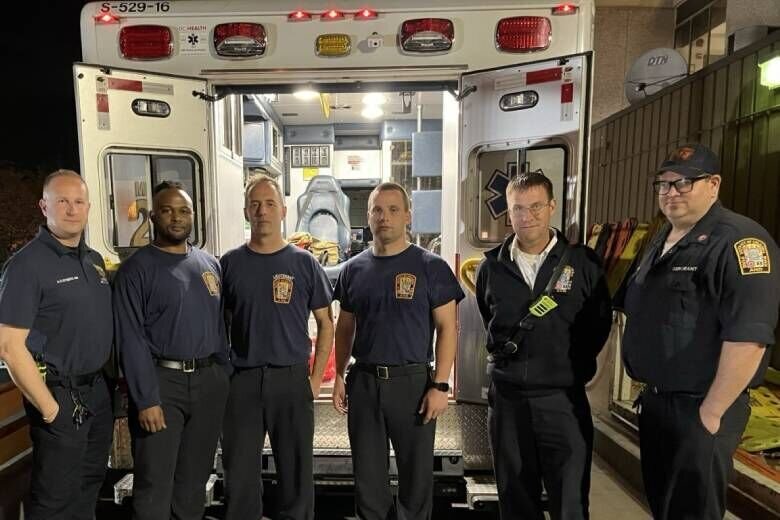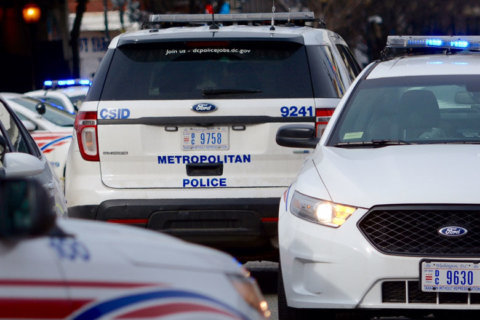
When patients suffer traumatic injuries or experience severe bleeding, doctors typically give them blood at the hospital. But for the first time, paramedics from DC Fire and EMS performed a lifesaving blood transfusion in an ambulance at the scene of an emergency.
On Wednesday night, paramedics performed the first blood transfusion in the field, saving the life of a man who was shot in Northeast, according to DC Fire and EMS. He was then taken to MedStar Washington Hospital Center.
The team that treated the patient included EMS Supervisor Lieutenant Paramedic Matthew Wood, Firefighter/Paramedic Logan Dana, EMT Robert Gill, and Firefighter EMT Nero Quiroz.
Prehospital blood transfusion is part of the department’s new Whole Blood Program, which launched in January. The assistant medical director for DC Fire and EMS, Dr. David A. Vitberg, says rapid blood transfusion significantly improves a patient’s chance of survival.
“DC’s new Whole Blood Program, launched by Mayor Bowser this year, offers some of our most critically injured patients the best chance of survival. Minutes can be the difference between life and death,” Vitberg said. “DC Fire and EMS is a crucial first link in our healthcare and trauma system, and we are providing cutting-edge care to patients in the District with this new tool to save more lives.”
The program’s importance is highlighted by the fact that, according to Vitberg, mortality rate for trauma patients suffering from hemorrhagic shock or severe bleeding is high — at about 20%.
“Reducing death from hemorrhage is an area where we have the potential to make a profoundly positive impact on patient outcomes in the District,” he said.
Donated blood comes from the American Red Cross and is stored at George Washington University Hospital’s blood bank. Amid a current national blood shortage, Vitberg asks the public to consider donating blood to help sustain the Whole Blood Program.
Dr. Emily Coberly with the American Red Cross said when a trauma patient experiences blood loss, “patients lose not just their red blood cells, which are transporting oxygen to their body, they’re also losing plasma that contains clotting factors and their platelets, which help their blood to clot.”
Coberly said that while all blood types are currently in demand, Type O is most useful in handling trauma cases because it “can be given to patients of all blood types safely.”
WTOP’s Kate Ryan contributed to this report.
Get breaking news and daily headlines delivered to your email inbox by signing up here.
© 2024 WTOP. All Rights Reserved. This website is not intended for users located within the European Economic Area.









